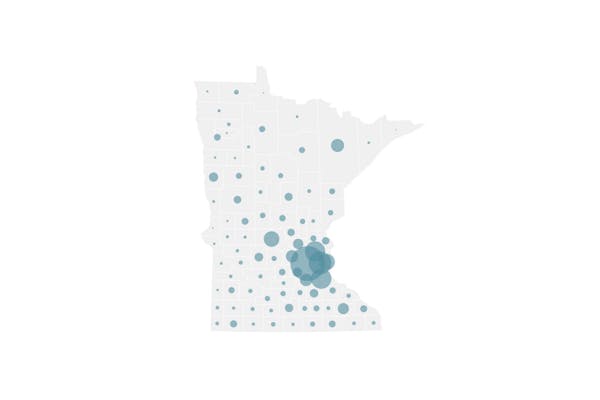Deaths from COVID-19 continue to be concentrated among the elderly and residents of long-term care facilities, with 13 of 17 newly reported fatalities on Tuesday involving residents of these facilities.
The pandemic has now been associated with 748 deaths in Minnesota, including 608 long-term care residents, according to the latest COVID-19 figures provided Tuesday by the Minnesota Department of Health. Total infections have reached 17,029, and the number of hospitalized patients stands at 545 — with 229 of those patients in intensive care.
State health officials on Monday said they were making strides in their latest strategies to protect residents and workers at long-term care facilities, including universal diagnostic testing in any facilities in which cases are found. Outbreaks of at least one case among residents or workers have been reported so far in 206 facilities that operate at least 10 beds.
The state sent mobile teams to perform testing in 21 long-term care facilities, and has scheduled testing at another 54 facilities, said Jan Malcolm, state health commissioner, on Monday.
"We've made pretty good progress on getting a system in place to increase that testing" in long-term care facilities, she said.
Staffing at long-term care facilities has been a problem, as workers with COVID-19 have had to immediately stop providing care of residents. Malcolm said the state is also forming "bridge" staffing teams to respond to long-term care facilities that need temporary workers — including some nurses from the U.S. Veterans Health Administration.
Data modeling by the University of Minnesota and state health researchers has predicted an increase in cases and deaths, beyond long-term care facilities, following the end on Monday of a statewide stay-at-home order.
Malcolm said people cannot take the end of that order, which had been in effect for 51 days, as a suggestion that they can disregard social distancing recommendations to remain 6 feet apart from others in public, or public health measures such as hand washing or staying home when sick. Testing capacity has increased as well, and Malcolm encouraged Minnesotans with symptoms to use that resource.
"Anyone who has symptoms of COVID-19 can and should be getting tested," she said.
The latest data showed 5,229 diagnostic tests reported on Monday, and 161,835 tests since the start of the pandemic. The state's "dial back" dashboard, which health officials will use to determine if current social distancing measures are sufficient, lists a capacity of more than 10,000 diagnostic tests per day.
Jeremy Olson • 612-673-7744

Former diversity worker sues University of Minnesota after firing over swastika photo

As longtime Hutchinson, Litchfield papers close, 2 newspapers launch to take their place

In Grand Rapids, Itasca Pride is planning its first event, but there is already pushback
Mother charged with fentanyl overdose death of her 8-month-old boy in Roseville hotel room

